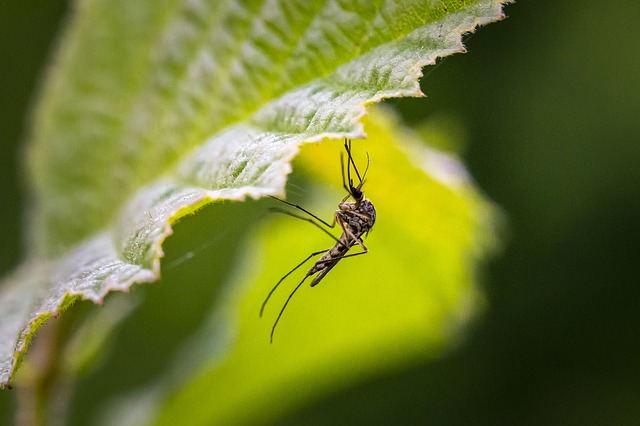As a pet parent, there will come a time when you need to deal with your adorable dog getting bug bites. While most bug bites are uncomfortable but harmless, some can lead to viruses, parasites, or life-threatening bacteria. This is why it’s essential to recognize and treat bug bites on your dog immediately and seek veterinary help if needed. The following information will help you act quickly.

Identifying and Treating the Type of Bug Bite
Surprisingly, there a few types of bug bites that are common on dogs, such as the ones listed below:
Flea Bites
These tiny little black insects hop and zoom across the surface of your dog’s skin and love to settle in around the neck, head, and anus. Flea bites irritate the skin and usually form small clusters of red bumps that feature a halo surrounding the bite. Signs your dog has been bit by a flea include excessive and intense chewing and itching in the same spot as the bite. In addition, some flea bites can lead to swelling, crusting, redness, hair loss, and oozing.
Treating flea bites with a topical solution or medical prescription from a veterinarian is recommended. You can also prevent flea bites by using a flea collar, bathing your dog in anti-flea shampoo, and using a pet-friendly flea deterrent on your lawn.
Tick Bites
These pesky critters can be found in all seasons and live almost anywhere. Ticks latch on to your dog’s skin and feed off your dog. They are capable of transmitting serious diseases such as ehrlichiosis, Lyme disease, and Bartonella and Rocky Mountain spotted fever. Inspect your dog’s skin frequently and look for small brown bumpy specs attached to your dog’s skin. The most popular areas ticks like to attach to include the limbs, face, ears, paws, head, groin, and sides.
Treatment involves removing the entire tick, including the head with tweezers. Once you remove the tick, keep it in a plastic zip-lock bag for the veterinarian to test for disease. In addition, you can lessen the risk of ticks attaching to your dog’s skin by avoiding highly populated areas where ticks are known to be, such as tall grass, and using anti-tick and flea shampoo on your dog regularly.

Mosquitoes
Zing! Your dog just got bit by a mosquito, but now what do you do? Mosquito bites can produce redness of the skin, swelling, and sometimes hives. These symptoms are often temporary, but this annoying insect bite can also lead to heartworm disease.
Since mosquitoes are difficult to avoid, preventing your dog from getting heartworm disease is easier. Prevention often involves prescription heartworm medication that protects your dog’s lungs and heart.
Hornets, Wasps, and Bees
When your dog feels the sting from a bee, wasp, or hornet bite, it hurts them just as much as it, does you. Symptoms include your dog yelping or whining, licking the wounded area, and lameness if they stepped on the insect. In addition, some dogs are allergic to bee, wasp, and hornet stings, producing symptoms such as hives, redness, swelling, stumbling, diarrhea, and vomiting. Therefore, you must contact a veterinarian immediately for urgent care assistance.
A severe allergic reaction can restrict airways and produce the following symptoms:
- Breathing with an open mouth
- Breathing with flaring nostrils
- Noisy breathing
- Breathing while positioning the elbows facing outward from the body
- An expanding belly that moves quicker than regular breathing activity
Bug bites on your dog can range from mild to severe. It’s best to prevent your dog from being bit by limiting their access to areas known for fleas, tickets, hornets nests, and bee hives. Preventative care is an excellent way to protect your dog’s health and overall well-being from but bites. Consult with a veterinarian to determine the best care that is ideal for your dog today!
